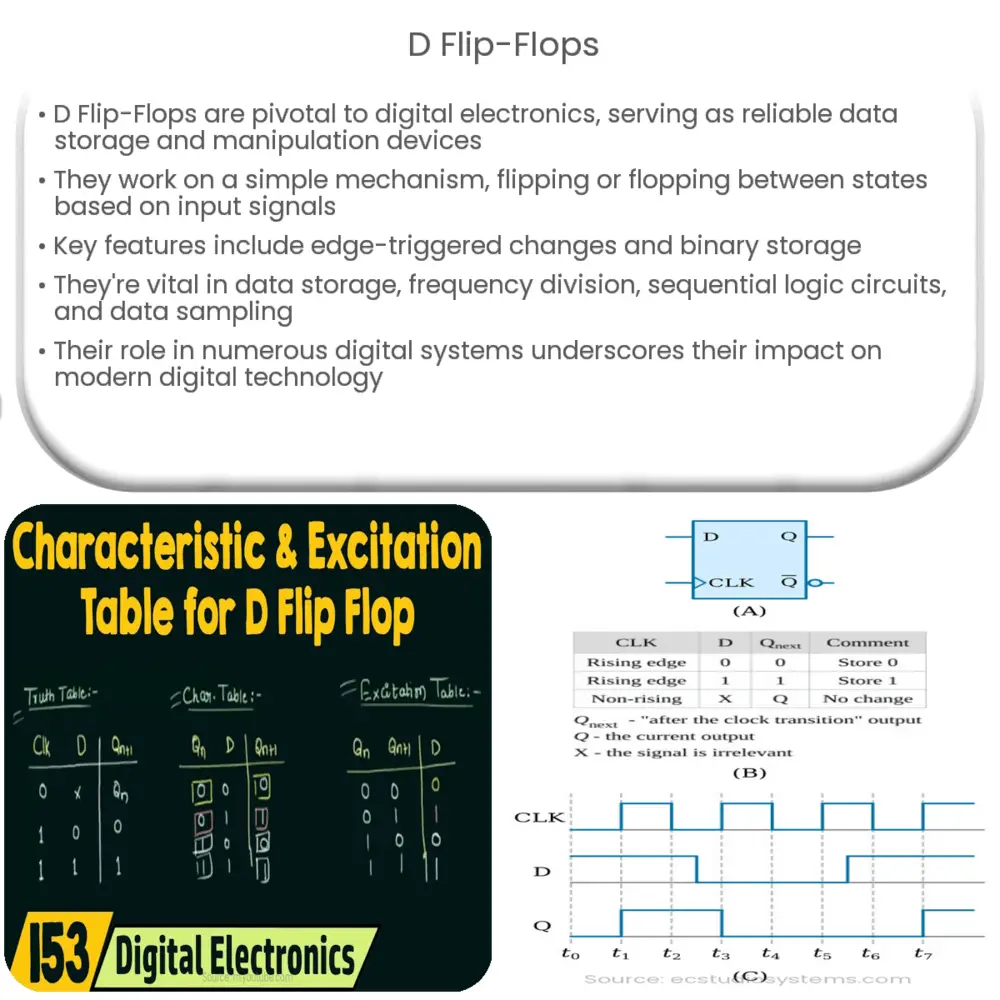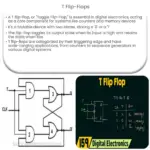Explore the world of digital electronics with our comprehensive article on D Flip-Flops, covering their working, key features, and broad applications.

Introduction to D Flip-Flops
The Digital world relies heavily on various data storage and data manipulation devices. One such essential element is the D Flip-Flop. A D (Data or Delay) Flip-Flop is a type of flip-flop which is widely used in digital electronics due to its simplicity and reliability.
What is a D Flip-Flop?
A D Flip-Flop is a circuit that has two stable states and can be shifted from one state to the other by applying an input signal. This basic bistable element forms the backbone of all forms of digital storage. Essentially, it ‘flips’ to a set state or ‘flops’ back again, hence the name flip-flop.
Working of a D Flip-Flop
Let’s dive a little deeper into the workings of a D Flip-Flop. At its most basic, a D Flip-Flop consists of a D input, a clock (CLK) input, and outputs Q and Q’. Here’s a brief step-by-step explanation:
-
When the CLK input signal is low (0), the flip-flop is disabled or inactive. Therefore, changes in the D input do not affect the output.
-
When the CLK input signal transitions from low to high (positive edge), the value currently on the D input is captured and sent to the Q output.
-
The Q’ output is always the inverse of Q, so when Q is 1, Q’ is 0 and vice versa.
Key Features of D Flip-Flops
-
Edge-triggered: This means they change state only during the transition of the clock signal, and are not affected by the level of the clock signal. This is a significant advantage in digital circuit design as it avoids problems with signal timing.
-
Binary Storage: They can store binary information, making them essential for digital memory systems.
-
Reliability: D Flip-Flops are highly reliable and are used in numerous digital systems such as computer memory, data registers, and more.
In the next section, we will delve into applications of D Flip-Flops and how they have revolutionized the digital world.
Applications of D Flip-Flops
D Flip-Flops have an array of applications across various sectors of digital technology. Some of these applications are:
-
Data Storage: Being capable of storing binary data, they are extensively used in computer memory and data registers.
-
Frequency Division: By chaining D Flip-Flops in a specific arrangement, they can be used as frequency dividers to generate a clock signal that is a fraction of the input clock frequency.
-
Sequential Logic Circuits: D Flip-Flops form the basic building blocks for many sequential logic circuits such as counters, shift registers, and more.
-
Data Sampling: They are used in data sampling circuits, where it is necessary to capture and store a signal value at a specific moment in time.
The Impact of D Flip-Flops
D Flip-Flops have greatly revolutionized the digital world, providing a simple yet effective solution for storing binary data. They are part of almost every digital device we use in our daily lives, including computers, smartphones, and digital watches. Their capability to maintain a stable state until an input is provided makes them an integral part of digital electronics.
Conclusion
From simple data storage to complex sequential logic circuits, D Flip-Flops have a widespread use in the realm of digital electronics. They have proven to be an indispensable tool for the designers and engineers who work tirelessly to improve and innovate in the field of digital technology. With their unique ability to ‘flip’ and ‘flop’ between states based on input, D Flip-Flops continue to serve as the backbone of digital memory systems, contributing significantly to the progress of modern digital technology.




